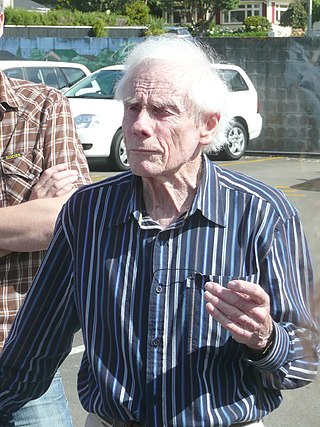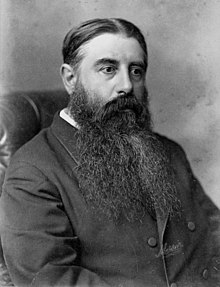
Wellington College of Education was established in 1888 with the purpose of educating teachers in New Zealand. It became the Faculty of Education of Victoria University of Wellington, formed from the School of Education of the University, and the Wellington College of Education on 1 January 2005.

The suburb of Plimmerton lies in the northwest part of the city of Porirua in New Zealand, adjacent to some of the city's more congenial beaches. State Highway 59 and the North Island Main Trunk railway line pass just east of the main shopping and residential area.

William Gray Young was a New Zealand architect in the early 20th century, designing buildings such as Knox College in Dunedin, the Wellington railway station and Wellington's Elliott House. He was president of the New Zealand Institute of Architects from 1935 to 1937.

Sir John Hall was a New Zealand politician who served as the 12th premier of New Zealand from 1879 to 1882. He was born in Kingston upon Hull, England, the third son of George Hall, a captain in the navy. At the age of ten he was sent to school in Switzerland and his education continued in Paris and Hamburg. After returning to England and being employed by the Post Office, at the age of 27 he decided to emigrate. He was also Mayor of Christchurch.

Newton is a small suburb of Auckland, New Zealand, under the local governance of the Auckland Council. It had a population of 1,641 in the 2013 census.

Te Ngākau Civic Square is a public square in central Wellington, New Zealand, between the Wellington central business district to the north and the Te Aro entertainment district to the south.

The following lists events that happened during 1907 in New Zealand.

The New Zealand Centennial Exhibition took place over six months from Wednesday 8 November 1939 until 4 May 1940. It celebrated one hundred years since the signing of the Treaty of Waitangi in 1840 and the subsequent mass European settlement of New Zealand. 2,641,043 visitors attended the exhibition.

Stanley William Toomath was a New Zealand architect who practised mainly in Wellington. He was a founding member of the Architectural Group in Auckland in 1946, a life member of the Wellington Architectural Centre and a Fellow of the New Zealand Institute of Architects. Both the founding of the Group and the Architectural Centre were important factors in New Zealand's modernist architectural history.
The following lists events that happened during 1885 in New Zealand.

Hōri Pukehika was a New Zealand Māori tribal leader and woodcarver.
Pauline Rhodes is a New Zealand artist. Rhodes is known for her artworks related to the landscape, which take two forms: outdoor works, in which she makes minimal sculptural interventions in the landscape, which exist only through her documentation, and sculptural installations in gallery spaces, which are conceptually related to the outdoor works.

Petone Settlers Museum is a local history museum located in the Wellington Provincial Centennial Memorial, a historic building in Petone, Lower Hutt, New Zealand. The building was originally constructed to mark the Wellington province's centennial commemorations; the museum opened in the building in 1977. The building was extensively refurbished in 2016.

Eleanor Catherine Sperrey, also known as Kate Sperrey, was a noted portraitist from New Zealand who flourished at the end of the nineteenth century. She painted portraits of many of the most noted statesmen of New Zealand and has works in the permanent collections of the Museum of New Zealand Te Papa Tongarewa, the Alexander Turnbull Library, Auckland Art Gallery, and the Whangarei Art Museum.

St. Joseph's Church is a modern Catholic church opened in 2004 located in the central city suburb of Mt Victoria, Wellington, New Zealand, on the eastern side of the Basin Reserve.
The 1987 Queen's Birthday Honours in New Zealand, celebrating the official birthday of Elizabeth II, were appointments made by the Queen in her right as Queen of New Zealand, on the advice of the New Zealand government, to various orders and honours to reward and highlight good works by New Zealanders. They were announced on 13 June 1987.
The 1990 New Year Honours in New Zealand were appointments by Elizabeth II on the advice of the New Zealand government to various orders and honours to reward and highlight good works by New Zealanders. The awards celebrated the passing of 1989 and the beginning of 1990, and were announced on 30 December 1989.
The Winter Show Building in John Street, Wellington was built in 1928 by the Wellington Show Association as a permanent home for the Winter Show, an annual trade fair promoting agriculture, trade and industrial innovations. In 1998 it became the home of Te Whaea, a national performing arts centre.














